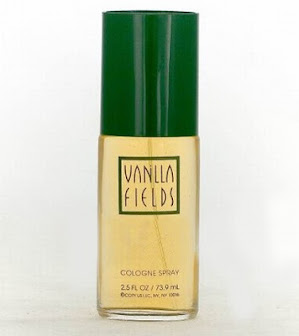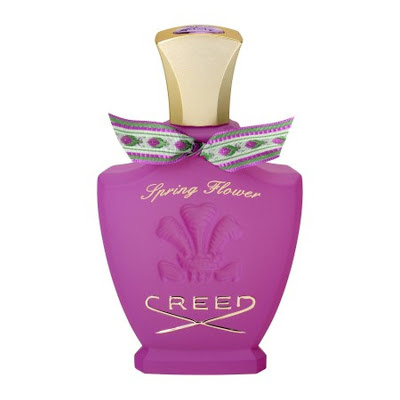Chanel would be well served to reconsider their compliance with IFRA regulations. I fully understand the legal concerns, and the social pitfalls of ignoring this association's multitudinous edicts, but when you're avoiding a recently-outlawed ingredient (slight exaggeration) critical to the success of your flagship niche perfume, you're just pleasing bureaucrats at the expense of perfumery. And that's pretty darned awful.
Successful chypres incorporate bergamot (and other citrus notes), cistus labdanum, and a base of oakmoss into variable structures that are usually citrus-focused, or woods-focused. Grey Flannel is my reference (Mitsouko for others) - a dehydrated, lemon-centric fruit melange on top, followed by a particularly woody accord that loosely incorporates the spiced bourbon barrel side of labdanum's many facets, followed by the dankest oakmoss imaginable. To suggest pyramid naturals are in there, other than the oakmoss listed on the box, is disingenuous. Synthetics always stand in for traditional raw materials in modern perfumes. The better ones intersperse naturals into the synthetic formula, but generally you're guaranteed to experience something lab-made. The trick is in fooling the nose into thinking it's smelling all-natural materials.
Absence of traditional chypre materials is often circumvented by a perfume's ability to substitute its means for the appropriate end, and achieve a balance between divergent accords. When you smell Grey Flannel, you feel like you're surrounded by dryly brusque, bright wood notes (a trick of the citrus light), while also feeling ensconced in the shadows of low-lying trees and shrubs, all very wet and dripping green. It's a deeply raw, leafy sensation, and quite a wonderful perfume. And Geoffrey Beene never went out on a limb to self-classify and then justify an absence of real cistus labdanum, so its secondhand classification by fragrance historians is not commercially influenced.
I approached 31 Rue Cambon knowing that it is generally considered a chypre, Luca Turin calls it one, etc. Chanel's spin is that they've created an oakmoss-free chypre, with bolder labdanum notes standing in, and a bunch of other things propping up the illusion. We're to automatically forgive that they're disinterested in bypassing IFRA oakmoss regs, which severely restrict the dosage of actual oakmoss permitted in contemporary fragrances, and embrace their compromise. According to them, and many Chanel fans, 31 is beautiful enough to get away with it. I'm not convinced, but I'll be a gentleman and say that despite my reservations, and what my nose smells, I'm eager to let 31 be different things for different people, without pre-labeling it and swaying their impressions. So I wore it to work, knowing that my boss and co-workers are not especially interested in perfume, and possess an average to below-average knowledge of the better ones.
As a creature of habit, I tend to leave home early every day to beat the morning rush hour traffic, which puts me in the office about thirty minutes before my shift starts. My boss was there on 31 day. She was talking to a resident therapist about something as I sat down. It was probably a minute after I sat down that she stopped mid sentence and leaned in closer to the therapist, also a female. "Is that you?" she said. "You smell nice. Some kind of perfume you're wearing?"
The therapist suddenly looked puzzled. It seemed she could not smell anything. "I'm not wearing perfume," she said.
The boss lady straightened up and said, "Well, maybe something in your hair? It smells like Obsession. Are you wearing Obsession?"
"No," said the therapist. "Really, I'm not wearing anything."
I kept my mouth shut.
The therapist left, and we began our morning routine, preparing for the day. I walked past my boss's desk, and she looked at me. "Oh, I think it's you! Are you wearing perfume? What is it? I just got a whiff of something that smells good. Is it Obsession? Are you wearing Obsession?"
This particular question didn't land so well, not because she was asking it, but because the answer in no way comports with the realm of $35 Calvin Klein fragrances. I ruefully (pardon the pun) wrote the name down for her, and she raised an eyebrow and said, "Huh. Thanks."
Not a $115 hi-pedigree perfume.You could write this exchange off to pedestrian ignorance, but a pedestrian's opinion tends to be like a child's - brutally honest, and to the point. The fact that she was mistaking 31 for Obsession made me realize that she's the perfect age to know Obsession, and similar orientals, quite well. I can't personally say I smell Obsession in 31, but then again oriental accords are based on amber, and 31 has one massive plonking amber in its base. The Obsession thing made me cross-reference past pedestrian reactions to fragrances by other brands. Recently Mont Blanc's Individuel elicited a gushing response from a female co-worker who dropped what she was doing to ask me about it. She didn't compare it to anything. She simply said, "Ooh! That smells really good!" And Creed fragrances almost always garner "holy shit" comments. People tend to want to know what makes Creeds smell so dimensional. A prior boss thought Original Vetiver smelled "very, very expensive" but couldn't place where she'd ever smelled it before. She was not name dropping CK fragrances with that one.
Am I putting too much stock in this? Making too big a deal out of the Obsession comments? Perhaps. But it's a punch in the gut when you're wearing something supposedly classy, hoping its class will shine through, only to have someone's very first knee-jerk response be a throwback to a cheap eighties oriental. And an oriental is how I read 31 as well, very loud and almost bombastic, although falling just shy of shoulder pads. Its top accord is fruity, a little lipsticky, not particularly citric, but more of a "red fruit" type of smell, albeit with a slick of bergamot overlaying things. Because there's no oakmoss, it has an airy, flowing, floral feel, but this perfume desperately, desperately needs oakmoss. Its absence is painfully obvious. Then there's 31's grey iris note, which swiftly follows the initial sweetness with a thin, bready aspect. It yields some depth, and incremental contrast, but not enough. The iris in 31 is unfriendly, but it isn't plush. It smells as if someone clapped a bit of chalk dust across my wrist. Then comes the lactonic flow of peachy-milky notes that caress the air in a soapy cloud. One minute it's a floral jasmine-like arrangement of soft-focus white petals. Another minute there's a citrusy-vanilla vibe going on. And yet another minute later, peppery amber with labdanum standing in for moss. Quite a dizzying merry-go-round.
Ultimately it dries down to a woody-floral base, which gets flatter and sweeter as the hours wear on. Without the foundation of real oakmoss in this base, without that bitter green monster lurking beneath the sunny proceedings, 31 feels a bit hollow and commits the greatest sin of modern perfumery: it lacks
tension. To suggest otherwise feels false. Let's face it, you can't create a high quality chypre with fair-grade synthetics and a masterful composition without attaching the perfume to the basic structure of a classical chypre. Yes, the citrus is there, yes, the labdanum is there, but no, the moss isn't, and no, 31 Rue Cambon doesn't quite pull off ravishing beauty without it. It is, however, very, very pretty, and I received a compliment from a younger female co-worker today who had to know what it was, and repeatedly said that it smelled VERY nice. So to suggest this fragrance is a failure is also false. 31 may not be perfect, but it's still a lovely perfume, and if I wasn't so hung up on Chanel's self-deceiving approach to it, I'd probably be less biased in my review. The next time they exclude something important, they ought to keep a lid on it. If lightweights can get blind drunk on the practical joke of non-alcoholic beer, we perfume enthusiasts can smell depth and contrast where there is only flat beige. The Placebo Effect is perhaps the world's greatest equalizer.






























